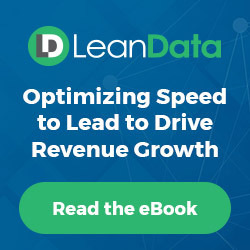What is lead response time?
Lead response time, or “speed to lead,” is the time it takes for your sales team to respond after someone shows interest in your business. It’s a key factor in B2B conversions. In simple terms, the faster your team responds, the better. Here’s how lead response time breaks down:
Lead Response Time = Lead Processing Time + Representative Response Time
Why lead response times are crucial
Winning over customers isn’t just about fast lead times. Of course, your lead response and outreach to prospects, leads, and accounts need to be high quality, and your products and services must provide real value. That’s the basic requirement to compete in today’s market.
But beyond offering quality, the real edge comes from how quickly you respond to leads. Consider this:
- 78% of customers buy from the first company to respond to their inquiry (Lead Connect).
- You’re 7x more likely to qualify a lead if you reach out within an hour, compared to waiting just one more hour (Harvard Business Review).
- Only 7% of companies respond to leads within five minutes, while 55% take five or more days (Drift).
That last stat speaks volumes.
Speed to lead statistics: The 5-minute rule
How important is a five-minute lead response time? A study by LeadResponseManagement.org uncovered two rather remarkable findings. First, it was found you are 100 times more likely to connect with a prospect when you make initial contact within five minutes as compared to if just one hour has elapsed. Furthermore, you are 21 times more likely to convert a lead into an opportunity when responding in five minutes or less as opposed to having just one hour elapse.
Speed to lead sets you up to win!

The importance of fast response times
Lead response time is one of the biggest factors in winning deals in the B2B world. The longer you wait to contact a lead after they request information or a demo, the less likely you are to close the deal.
Think about it: When you walk into a store and don’t get the help you need, how long do you wait before leaving and going elsewhere?
Now, in B2B, where deals often exceed $50,000, why would anyone expect customers to wait longer than they would for something like clothes or furniture? A five-minute response time is the standard, but the faster you respond, the better. In fact, a Velocify survey found that lead conversions jump by 391% when you respond within one minute of an online inquiry. That’s not just a scheduled meeting—those are actual conversions.
Considering it costs around $198 to acquire a lead, you want to make sure that money is well spent. So, how do you start improving your lead response time?
Strategies to improve your lead response times
The first step to improving your “speed to lead” is figuring out your current lead response time. Get your Marketing and Sales teams on the same page about this, and review the actual response times for every type of lead and channel. Don’t just rely on averages. While the mean is helpful, also look at the median and the range between the fastest and slowest responses.
Once you’ve assessed your current lead response times, set realistic goals. Aim to improve not only the average response time but also reduce the variation between fast and slow responses.
With your goals in place, focus on minimizing lead processing time and making sure leads are assigned to the right rep every time. If you’re dealing with a high volume of leads, the best way to achieve this is by automating manual tasks. After all, it’s impossible to hit a five-minute response time if it takes an hour just to process leads manually.
Automated lead-to-account matching tools, like LeanData, can instantly match inbound leads to existing accounts in your Salesforce CRM. You can enrich this data with solutions like ZoomInfo to add more context. Automated lead routing then ensures that the right leads get to the right reps as quickly as possible.
By automating these processes, you eliminate bottlenecks and human errors, ensuring no leads fall through the cracks.
Improve Speed to Response with LeanData Routing
LeanData’s industry-leading routing solution has several features to help your team optimize its speed to lead. First, administrators deploy “edge priority” features to prioritize the routing of time-sensitive leads first – for example, demo requests need immediate routing, while trade show booth visitors can be slotted in behind.
Once leads are routed to representatives, they are then “on the clock,” so to speak, with their personal follow up the only thing standing in front completing the lead response cycle. Automated processes help here too.
LeanData’s routing solution allows the round robin assignment of leads with a variety of filters. Experienced reps, for instance, usually have higher capacity and can effectively handle a larger lead load than new reps. Additional filters include expertise, be it product, language, industry, or other; work and vacation schedules, territories, time zones and more. Round robin assignments maximize your team’s effective capacity by optimizing distribution.
Furthermore, in the routing of leads, LeanData administrators lift speed to lead performance with new Hold Until nodes in their GTM flows. These Hold Until nodes hold lead records midway through processes until specified conditions are met or a defined time-limit expires. Once a record meets the conditions; for example, the Lead Status field is changed or the time limit expires, LeanData automatically directs the record to the next node in its path. In the case of a time limit expiration, the lead is routed to another rep, triggering automated notifications to both the rep and the SDR manager.
Finally, LeanData’s time-tracking functionality automates reporting on lead response time, making reports directly accessible from within Salesforce, empowering reps and managers to learn and improve upon both processes and personal performance.
Speed Wins the GTM Race
In today’s competitive market, speed is key to winning the go-to-market race. Luckily, there are proven automation tools and tactics that can help B2B revenue teams improve lead response efficiency.
Responding quickly to leads doesn’t just create a better experience for your prospects—it also boosts conversions, strengthens your brand, and increases the return on your digital spend.










